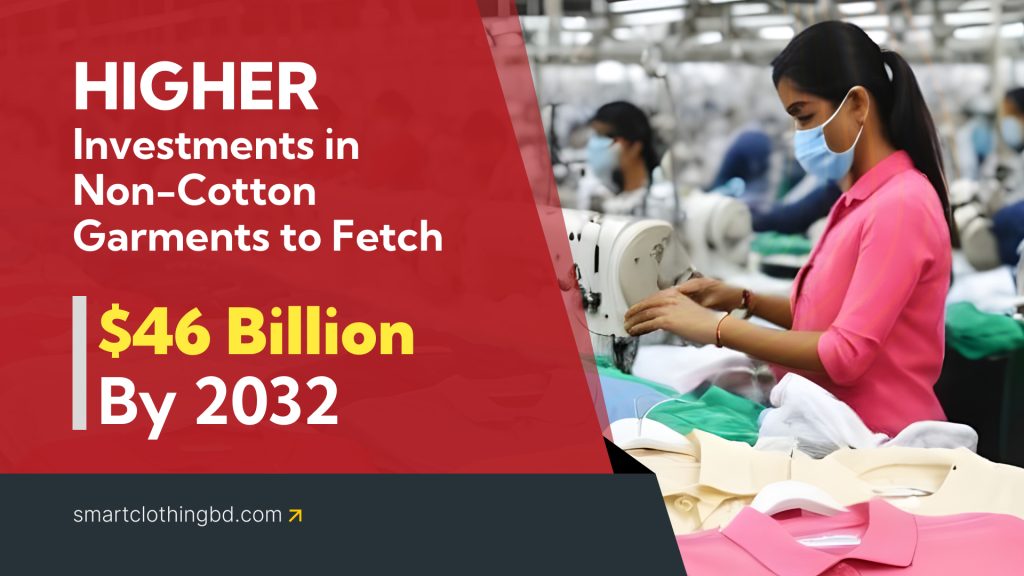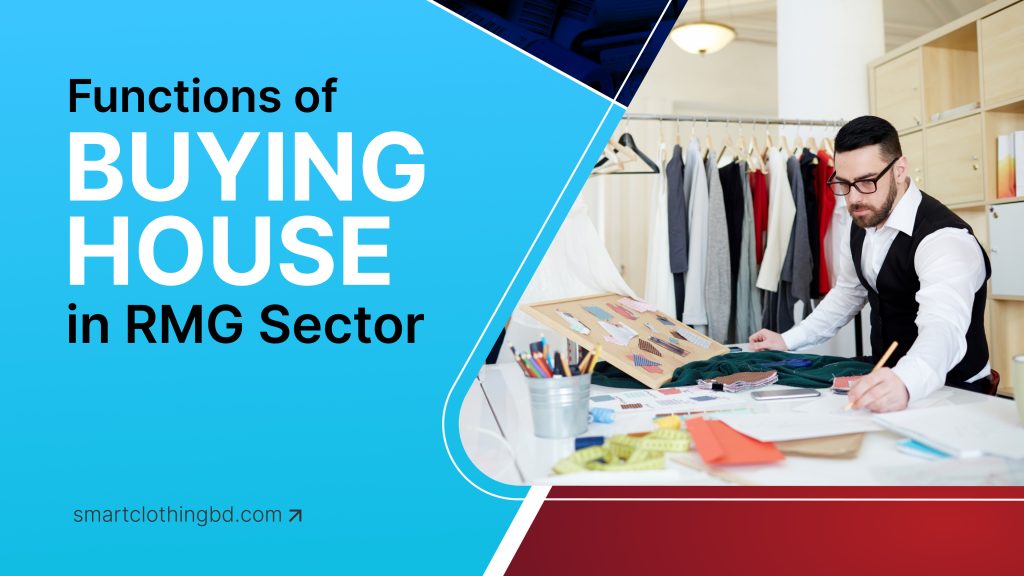
Welcome to a deep dive into the Role of Buying Houses in the Garments Business—A sector that not only defines the pulse of Bangladesh’s booming economy but also marks its dominance in the global apparel market.
Buying houses act as important links between garment manufacturers and the global stage, ensuring seamless flow of high-quality products to far-flung markets.
Buying Houses, or Garment Buying Houses as they are commonly known, are the unsung heroes of the apparel sector, ensuring that high-quality products find their way from manufacturers to retailers and ultimately to consumers while maintaining competitive prices.
With at least $1.4 billion exchanging hands between garment manufacturers and buying houses in a single fiscal year, it is clear that garment buying houses along with garment suppliers play an important role in this economic success story.
In this blog, we will share you “Role of Buying Houses in Garments Business”, uncovering the central place these firms play in connecting the world’s apparel market with the bustling factories of Bangladesh – a nation that proudly stands as the second highest RMG exporter globally.
Stay with us as we explore how these entities not only contribute to the Bangladesh RMG sector but also how they command a significant role in the global apparel market, ensuring the tag ‘Made in Bangladesh’ is accepted with pride across continents.
Another point to mention is that Bangladesh’s ready-made garments (RMG) industry is globally recognized for its ability to produce high-quality garments at more lower price than other garment-producing countries.
Garments Buying House
A garments buying house plays a vital role in the apparel business, acts as an important intermediary between garment manufacturers and buyers. This relationship ensures that both parties efficiently achieve their business goals.
By managing communication, ensuring product quality and meeting delivery deadlines, Buying House facilitates a smooth transaction process.
They work closely with garment suppliers, coordinating orders and ensuring products meet buyer specifications and quality standards.
In essence, a garments buying house serves as the backbone of the clothing business, guiding both new and established brands through the complexities of the garment industry. Whether it’s sourcing the right garments supplier or navigating through manufacturing challenges, these agencies or offices make the process more manageable.
They play a most vital role in the apparel industry by ensuring that manufacturers understand and meet the buyers’ requirements, thereby contributing significantly to the success of the business.
Remember, the success of any apparel business greatly depends on the smooth cooperation between the buying house and the garments supplier. Their collaboration ensures that products not only meet quality standards but are also delivered on time.
By doing so, a buying house proves to be an indispensable partner for both buyers and manufacturers in the dynamic world of apparel business.
Role of Buying House in Garments Business Details
A garments buying house plays a important part in the apparel business, acting as a crucial intermediary between foreign buyers and local suppliers. The primary functions include collecting orders from buyers, finding reliable local factories to fulfill these orders, and overseeing the entire order processing cycle to ensure goods are produced according to the buyer’s specifications and quality expectations.
By managing product development samples, securing necessary approvals, and ensuring timely shipments, buying houses ensure a seamless flow from production to delivery.
At a glance The role of Garments Apparel suppliers
- Order collection from the buyer
- Finding good suppliers (local factory) to complete the order
- Order processing from local factories
- Making product development samples for buyers
- Contacting buyers for necessary approvals
- Forwarding all the comments and approvals to the factories
- Follow-up order processing according to buyers demand
- Maintain desired product quality from sample to production
- Should follow inspection terms and conditions according to buyers demand
- Shipping the goods.
Order collection from the buyer
Collecting orders from apparel buyers involves gathering all purchase requests and details. This step is crucial for understanding what customers want to buy and when they need it. It’s all about making a list of what’s being ordered to ensure everything is ready and delivered on time.
Finding good suppliers (local factory) to complete the order
Finding reliable suppliers means searching for trustworthy local factories that can deliver the quality goods your customers want.
It’s about making a list of potential factories, checking their products, and choosing the best ones. In simple terms, you want to partner with factories that make good stuff, deliver on time, and support your need to satisfy your buyers.
Order processing from local factories
After you’ve picked the right suppliers, the next step is Order processing from local factories. This means telling the factories exactly what you want, how much of it, and when you need it by. It’s like placing your order at a restaurant – you choose what you fancy from the menu, and the kitchen starts cooking it up for you.
The aim here is to make sure the factories understand your order clearly, so they can get it right and deliver your goods on time.
Making product development samples for buyers
After placing your orders, it’s time for Making product development samples for buyers. Imagine this as giving your buyers a test drive of what’s to come. You ask the factories to create a small batch of the products, which works like a rough draft.
This step lets your buyers check out the quality, feel, and look of the products before they’re made in large quantities.
Contacting buyers for necessary approvals
After the samples are ready, the next crucial step is Getting the thumbs-up from buyers. Think of this like checking in with your friends before finalizing the big party plans.
You’ve got to reach out to your buyers and show them the samples you’ve prepared. It’s about making sure they like what they see and that everything meets their expectations.
Basically, you’re asking for their green light to go ahead with the full order. This step is all about clear communication and making sure everyone’s on the same page before moving forward.
Forwarding all the comments and approvals to the factories
Once you’ve received the nod from your buyers, the next step is Sending feedback and go-aheads to the factories. Imagine you’re relaying messages from one friend to another. You need to pass on any feedback, adjustments, or approval your buyers have about the samples back to the factories.
This ensures that factories know exactly what your customers like, what needs to be changed This step is important for detailing and getting the products right.
Follow-up order processing according to buyers demand
Following the go-ahead from buyers, the next phase is Following up on the order processing. Think of this like checking in on how your online shopping order is coming along. You’re keeping an eye on the production process to make sure everything matches what your buyers asked for. This step is all about staying connected with the factories, making sure they’re on track, and ensuring quality control.
Maintain desired product quality from sample to production
Ensuring the quality stays top-notch from sample to full-scale production is all about keeping things consistent. Think of it like baking cookies using a recipe that everyone loves. Just as you’d want every batch of cookies to taste just as good as that first successful attempt, you need to make sure the products you’re getting from the factories stay true to the quality of those initial samples.
Should follow inspection terms and conditions according to buyers demand
The next crucial step is Adhering to Inspection Terms and Checking Conditions. This step is like doing a final check-up to make sure everything is in perfect shape before it leaves the factory. You have to go through the products and check them against the buyers’ specific instructions and quality standards.
Shipping the goods
After ensuring, the last step is Shipping the Goods. Imagine this like sending off a package to a friend. Now that the products check out, you need to carefully pack them and send them on their way to your buyers.
Strengthening the Apparel Export Business
In conclusion, the role of garments supplier and garments importer, especially through the bd best garments buying house, cannot be overstated in the evolving landscape of the apparel business. These buying houses serve as crucial connectors, seamlessly bridging the gap between international businesses and Bangladesh’s rich garment industry. By choosing to partner with a buying house in Bangladesh business, companies not only gain access to top garments manufacturers and bespoke bd custom clothing manufacturers but also secure the best offers to amplify their competitive edge in the global market.

